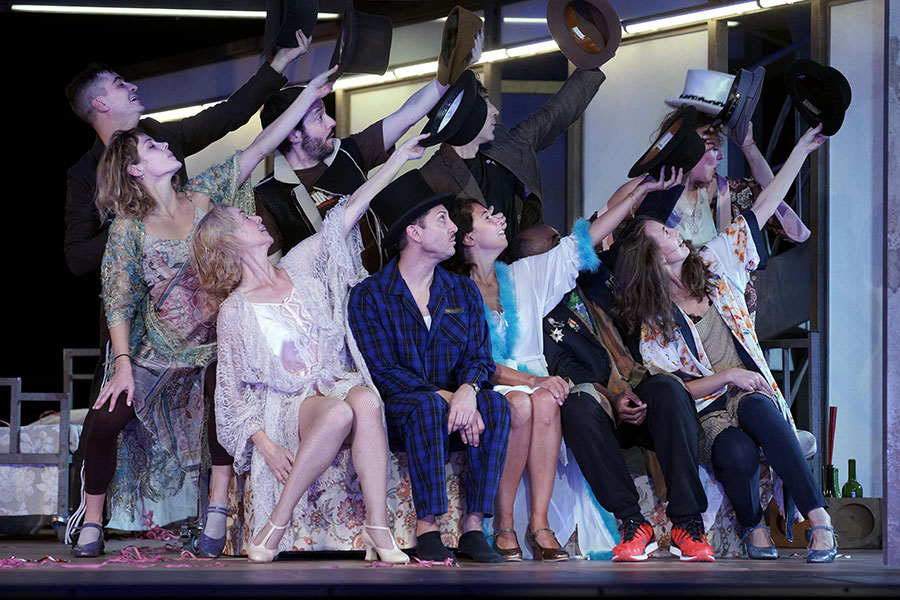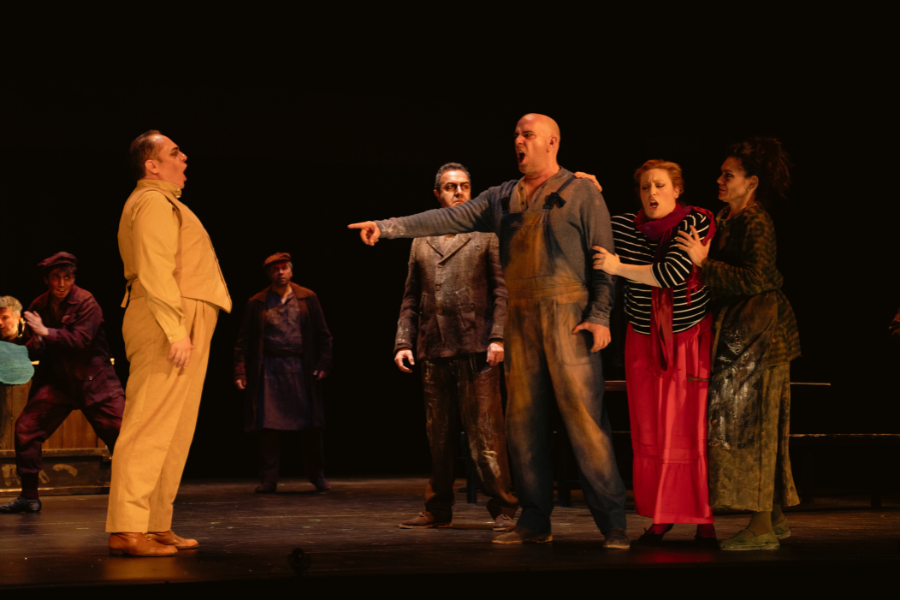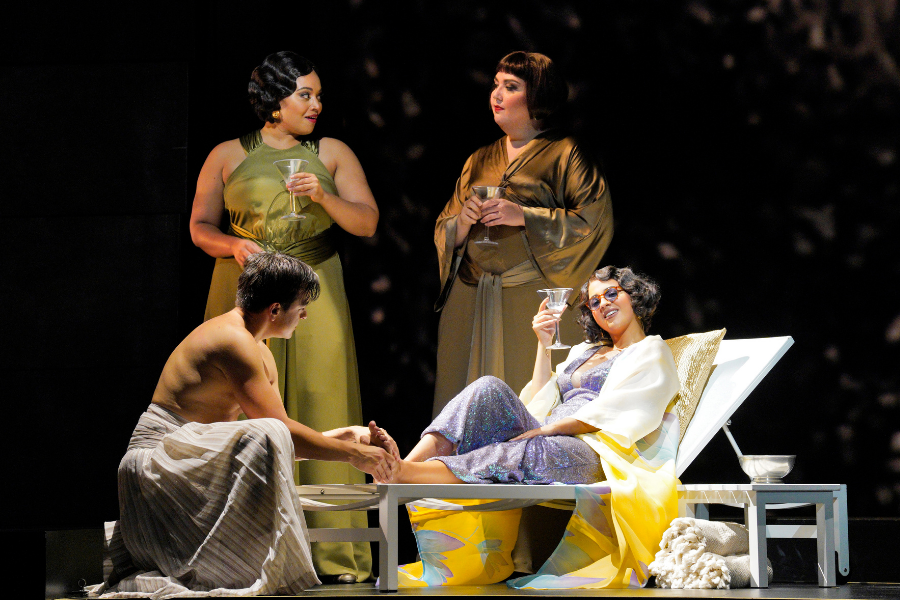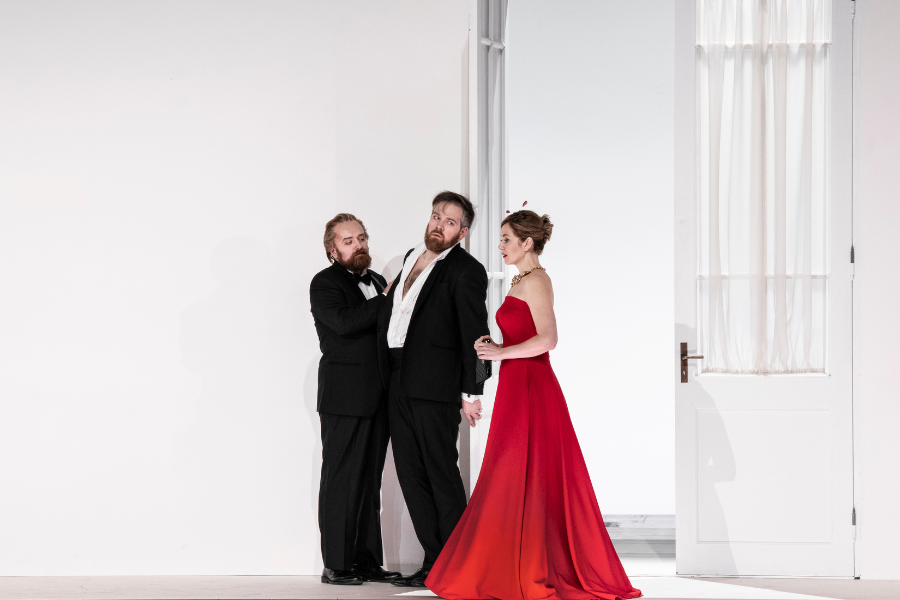Broasted in the comedy by Miguel Mihura, Tres sombreros de Copa makes its european debut at the Teatro de la Zarzuela

-
The Teatro de la Zarzuela hosts the debut in Europe of the zarzuela Tres sombreros de copa, one of the most ambitious works of Ricardo Llorca, with the musical direction of Diego Martin-Etxebarria and under the scenic vision of José Luis Arellano.
-
Function on Wednesday November 27 will be broadcast live via Facebook, YouTube and the website of the Theater; and Classic Radio will record the function of Saturday 16 to issue in next dates.
Ricardo Llorca took three years to compose Tres sombreros de copa, surprising zarzuela based on the comedy Miguel Mihura whose premiere european hosts from November 12 to 29 the Teatro de la Zarzuela in a new production. A teacher at the world-renowned Juilliard School in New York, where he has been living for more than 30 years, Llorca is a meticulous, demanding, very rigorous composer with his own work and nothing conventional. The music of the zarzuela that he now proposes to us is full of catchy melodies with a harmony that will hook the audience from beginning to end, from where the composer “makes his forays into more contemporary languages and techniques, yes, most of the time with dramatic ends ”, as indicated by the scholar Antonio Gómez Schneekloth. And it will also be fortunate, unfortunately not too usual, to once again be pleased with one of Mihura’s best texts, that memorable playwright ahead of his time, a precursor in Spain of the theater of the absurd and never sufficiently valued.
The pit podium will be occupied for the first time at the Teatro de la Zarzuela by master Diego Martin-Etxebarria, principal director of the German Opera in Chemnitz, whose outstanding career has focused primarily on international settings. In these functions, he will be in charge of the Orquesta Titular de la Teatro de la Zarzuela, Orchestra of the Community of Madrid, the Main Choir of the Teatro de La Zarzuela and an extraordinary cast. For Martin-Etxebarria, the score by Ricardo Llorca has all the incentives: “It is a very original score – inspired by Neapolitan folklore and southern Italy – very demanding for the orchestra, with a lot of metal, percussion and a structure Very rich rhythm, reminiscent of circus music and some curiosities as an instrument that is not usually heard in opera houses such as the accordion ”.

Tres sombreros de copa, Teatro de la Zarzuela. 2019 © Javier del Real
The new production of the Teatro de la Zarzuela Tres sombreros de copa, commissioned and edited by the New York Opera Society and premiered at the Sérgio Cardoso Theater in São Paulo in 2017, will feature the always unexpected and lucid staging of José Luis Arellano, for whom Mihura’s theater was from the first moment a magical motive of fascination: “Those women without mother, those crazy men behind those dancers, that humor that felt so close and above all, the simple poetry hidden under all that vulgar and tremendous routine”. And that moves to the stage, now, in a very special way: “We raise the curtain again to tell this story once again, perhaps in a different way. He is accompanied by the veiled whisper of Ricardo’s music with the same hobby and the same vertigo of those jugglers who throw their objects with the hope and rigor that they fall back into their hands. ”
Words of Arellano that define to the millimeter what is not seen but exists. But it excites. And it will also have a lot to do with the extraordinary voices of each singer, the convincing arts of the actors.
The tenor Jorge Rodríguez-Norton, who this past summer has become the third Spanish who in 143 years debuts at the Bayreuth Festival (he did it with Tannhäuser, and the previous two were Plácido Domingo and Victoria de los Ángeles), will interpret the Dionisio’s endearing role, which he finds in Paula – a fun dancer played by the young and virtuous soprano Rocío Pérez-, a different and happier way of seeing the world. The tenor Emilio Sánchez and the baritone Gerardo Bullónact willas Don Rosario and Don Sacramento, two episodic characters that allow propping up the story of Dionisio both at the beginning and at the end. The tenor Enrique Viana, as usual, will not leave anyone indifferent with his hilarious interpretation of Madame Olga, the bearded woman of the circus. The soprano Irene Palazón and the mezzo-soprano Anna Gomà, will give life to the dancers Catalina and Valentina, friends of Paula and always ready to have fun.
Together with the singers and the choir,will take the stage, 12 actors among them Boré Buika (Buby Barton), Marco CovelaForced (The German), Felipe de Andrés (Monsieur Garibaldi), Mon Ceballos (The Sly Hunter) or Chumo Mata (The Military Elder). Also,participate in the assembly four solo musicians (violin, trumpet, piano and accordion), three of them on stage and one in the pit.

Tres sombreros de copa, Teatro de la Zarzuela. 2019 © Javier del Real
The scenery of Ricardo Sánchez Cuerda changes reality at all times as in a magic trick, to which the costumes of contribute with inspired genius Jesús Ruiz, the lighting of the National Theater Award Juan Gómez-Cornejo and the choreography of Andoni Larrabeiti.
As it has been a healthy habit in the productions presented by the Teatro de la Zarzuela, the function of Tres sombreros de copa of Wednesday 27 November will be broadcast live in streaming through sites Facebook and YouTube of the theater, and its website.Likewise, the function of Saturday November 16 will be recorded by RTVE Classic Radio to broadcast on upcoming dates.
Metaphor of the three-legged stool
One of the reasons that will make the production a compact whole is the musical empathy between Ricardo Llorca and Diego Martin-Etxebarria. The latter indicates that to explain his conception of music he likes to use the metaphor of the three-legged stool, “which in this case would be melody, rhythm and harmony. In the classical period these were relatively simple but very robust. Hence the music has evolved wonderfully stylizing, blurring or enhancing some of them. The problem with the most avant-garde language – affirms the teacher – is that some composers have made these legs disappear until they leave us without a stool”. He considers that Ricardo Llorca sigue the wake of the great composers:”Provide innovative ways the pillars supporting the structure according to the dramatic needs, but remains recognizable to not ‘fall from the stool’” For Martin-Etxebarria this means that the public “will have melodies that can be whistled; delicious rhythms, some even catchy; as well as a harmony that sustains the musical discourse through a brilliant orchestration”.







